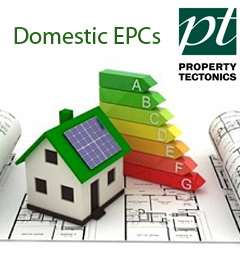The EU Directive on the energy performance of buildings (the Directive) came into effect progressively from 2007. Its implementation remains an important part of the strategy to tackle climate change. The current requirements are set out in the Energy Performance of Buildings (England and Wales) Regulations 2012, which came into effect on 9 January 2013, although they have been amended since, and the Building Regulations 2010.
The principle underlying the Directive and the regulations is to make energy efficiency of buildings transparent by using an energy performance certificate (EPC), to show the energy rating of a building, when sold or rented out and recommendations on how to improve energy efficiency.
This guidance covers only the requirements of the Energy Performance of Buildings (England and Wales) Regulations 2012 (‘the regulations’) regarding buildings designed for residential use. It does not cover buildings designed for commercial or non-domestic use (see separate guidance on Energy Performance Certificates for the construction, sale and let of non-dwellings.
This guidance does not cover the requirement in the Building Regulations 2010 for an energy performance certificate to be produced on the construction of a building or on the modification of an existing building so that it has a greater or lesser number of parts designed for separate use than it has before modification). Also where this guidance uses the word ‘building’ this includes (unless otherwise stated) a reference to ‘building unit’. Definitions of these terms and others are set out in the Glossary (see Annex A).
This guidance is intended to help sellers and landlords to understand their responsibilities for making an EPC available when selling or renting out a building, what buyers or tenants should expect when they begin the process of buying or renting a building and when an EPC is required.
This guidance aims to explain how the requirements work in practice and any interpretation of the regulations is offered only as a guide. The Department for Communities and Local Government (DLUHC) cannot provide legal advice. Therefore, it is important to read and understand the regulations. It will be for individuals themselves to take a view on whether or not they fall within the requirements of the regulations and in cases of doubt should seek their own legal advice.
This document replaces any previous guidance for buildings that are dwellings. The guidance is part of a suite of documents that explain the energy performance requirements for buildings in England and Wales only. Buildings in Northern Ireland and Scotland are subject to separate regulatory requirements and are not covered by or referred to in this guidance.
Key points
- An EPC is valid for 10 years and can be reused as many times as required within that period.
- The regulations require an EPC to be commissioned, if there is no valid EPC for that building, before a building is put on the market.
- Before marketing a building for sale or rent a person acting on behalf of the seller or landlord (for example, the estate or letting agent) must be satisfied that an EPC has been commissioned for that building.
- An EPC must be produced by an accredited energy assessor who is a member of a government approved accreditation scheme.
- All advertisements in the commercial media must clearly show the energy rating of the building (where this is available).
- The regulations require an EPC to be given free of charge to the person who becomes the buyer or tenant of the building.
- An EPC shows the energy efficiency rating on an A–G rating scale for a building.
- The EPC includes recommendations on how to improve energy efficiency.
- The EPC may also include information showing which of the recommendations would be eligible for finance under the Green Deal scheme, if they were carried out (see more details on the Green Deal).
Why an EPC is required?
An EPC is intended to provide prospective buyers and tenants of a building with correct information about the energy performance of the building and practical advice on improving such performance.
An EPC provides an energy efficiency rating (related to running costs) for a building based on the performance potential of the building itself (the fabric) and its services (such as heating, insulation ventilation and fuels used). Not all buildings are used in the same way, so the energy rating uses ‘standard occupancy’ assumptions which may be different from the way the building is used.
An EPC includes recommendations on how the energy performance of the building can be improved (to reduce running costs) together with an indication of the payback period. There is no statutory requirement to carry out any of the recommended energy efficiency measures stated.
Which buildings require EPCs?
Any reference to a building includes a reference to a building unit in that building, except where otherwise stated.
Existing buildings need an EPC when they are to be sold or rented out.
An EPC is valid for 10 years or until a newer EPC is produced for the same building no matter how many times the property is sold or rented out during that period. Existing occupiers and tenants will not require an EPC unless they sell, assign or sublet their interest in a building.
A building offered for sale or rent, must include the energy performance indicator of the building as shown on the EPC, for example C, in any advertisements in the commercial media[footnote 1]. There is no requirement to display the full EPC.
Situations where an EPC is not required
An EPC is generally not required where the seller or landlord can demonstrate that the building is any of these:
Buildings protected as part of a designated environment or because of their special architectural or historical merit are exempt from the requirements to have an energy performance certificate insofar as compliance with minimum energy performance requirements would unacceptably alter their character or appearance.
To comply with minimum energy performance requirements, many of the recommendations in an EPC report e.g. double glazing, new doors and windows, external wall insulation, and external boiler flues would likely result in unacceptable alterations in the majority of historic buildings. These can include buildings protected as part of a designated environment or because of their special architectural or historical merit (e.g. listed buildings[footnote 2] or buildings within a conservation area). In these cases an EPC would not be required.
Building owners will need to take a view as to whether this will be the case for their buildings. If there is any doubt as to whether works would unacceptably alter the character or appearance of a building, building owners may wish to seek the advice of their local authority’s conservation officer.
Temporary buildings with a planned time of use of 2 years or less.
Residential buildings which are intended to be used less than 4 months of the year or where the owner or landlord could reasonably expect the energy consumption of the building to be less than 25% of all year round use.
Stand-alone buildings with a total useful floor area of less than 50m2 (i.e. buildings entirely detached from any other building).
A building is also exempt where the seller or landlord can demonstrate that:
- the building is suitable for demolition
- the resulting site is suitable for redevelopment
- all the relevant planning permissions, listed building consents and conservation area consents exist in relation to the demolition, and
- in relation to the redevelopment, either outline planning or planning permission exists and where relevant listed building consents exist
Holiday lets may not need an EPC. An EPC will only be required for a property rented out as a furnished holiday let, as defined by HMRC, where the building is occupied for the purposes of a holiday as a result of a short term letting arrangement of less than 31 days to each tenant, and is rented out for a combined total of 4 months or more in any 12 month period, and if the occupier is responsible for meeting the energy costs for the property.
The property must meet all the conditions of a furnished holiday let as defined by HMRC and the occupant must not be responsible for the energy costs in order for an EPC not to be necessary. Please see the Glossary for the full definition of a Furnished Holiday Let.
An EPC is not required for an individual room when rented out, as it is not a building or a building unit designed or altered for separate use. The whole building will require an EPC if sold or rented out.
DLUHC is unable to provide specific advice regarding whether any of these exemptions may apply to specific properties. Specialist advice relevant to the circumstances should be sought.
There are no other exemptions from the EPC obligations although there may be some transactions which do not qualify as a sale or renting out (see Section 2, Transactions not considered a sale or rent). If in doubt, legal advice should be sought.






